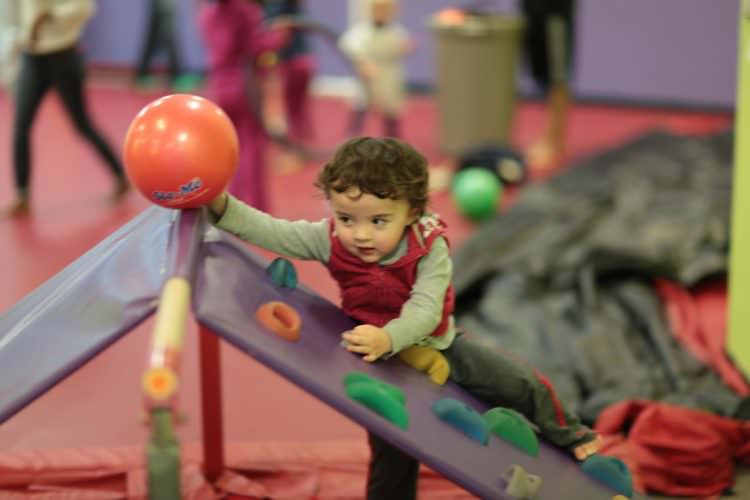4 Things Your Children Absolutely Do Not Need (and What to Give Them Instead)
Here are a few things I think children do NOT need:
They absolutely do not need hundreds of toys that light up, play “music” or require batteries.
They do not need the latest gadget, just because you know someone else (“everyone” else?) who has one.
They do not need many different pricey outfits, all color-coordinated from charming boutiques with French names.
They do not need expensive “enrichment” activities every night of the week.
So, what do I think a kid might need?
—They need physical nourishment. This means different things for different people, of course (especially around the world), but here in the U.S. it might mean lots of yummy fruits and veggies, some macaroni and cheese every now and then, some chocolate chip cookies for a treat, your favorite meal that your grandma used to make, and dinners inspired by different places around the world. It does not mean mom needs to be a short-order cook and make every child only their favorite foods every meal.
—They need classic, open-ended toys: wooden blocks, Legos, paper and colored pencils (markers, if you’re feeling brave), a stuffed lovey, a baby doll, and the encouragement to use their imaginations and play with anything. (Leaves for outside tea-party plates. A cardboard box can be anything. Old egg cartons and wrapping paper tubes seem to be especially prized.) They need a safe place to keep collections (buttons, rocks, leaves, shells, foreign coins, stamps, etc. Some children will try to collect all of the above.)
—They need clothes they’re allowed to get dirty. They need an outfit or two for dressing up on special occasions (this seems to be especially important for some little girls). They need aprons to wear so they can help you in the kitchen. They need your old dresses and old hats and scarves to play dress up.
—They need time with their parents and siblings. They need to play outside. They need to go to a zoo. They need to visit a farm (if they’re city kids) or the city (if they’re rural). They should visit an art museum or two. They need to see a great body of water. They need to get messy. They need to go swimming. They need to walk quietly on a nature trail. They need cuddling and tickling, joking and gentle teasing. They need to be around many different kinds, types and ages of people. They need grandparents or great-grandparents or an older family friend to spend time with.
—They need to ask questions. They need you to teach them how to find the answers in a book or by observation, and not just by “asking Siri.” They need to hear you say, “I don’t know. Let’s find out.” They need you to say, “That’s a great question, I’m glad you asked.” They need you to ask them silly questions like, “If you were an animal, what would you be?” or “If you were a color, what would you be?” or “If you could spend the night on the moon, what would you do?”
—They need to explore. They need to climb too high. They need to swing so hard the swingset rocks. They need to poke things with sticks and lift up rocks. They need to splash in some water. They need to ride something (a bike, a horse) that intimidates them at first. They need to be out of your sight part of the day. They need to solve their own conflicts. They might need to wrestle or jump on a trampoline. They need to run until they’re out of breath. They need to try a small business like selling lemonade or something they’ve made. They need to spend their own money, sometimes unwisely. They need to give to someone less fortunate. They need to take some object apart (an old radio? a clock?) and try to put it back together.
—They need sleep. They need to go to bed in time to be rested for the next morning. They need time with no screens flickering in their faces. They need to build a pillow fort. They might need to pitch a tent outside and sleep under the stars. They need to stay up late for a special occasion and then sleep in the next morning. They need a quiet time, when they can hear their own thoughts. They need the chance to be noisy, with drums and marching and exuberant singing (this should probably happen outside, for mom’s sanity).
—They need books. They need adults to read to them. They need to read to each other. They need gorgeous books to admire and funny books to laugh at. They need rhymes to jingle in their minds. They need familiar characters who are just like family (Frances , Harry
, Harry , Angus
, Angus ,Stuart Little
,Stuart Little , Mrs. Piggle-Wiggle
, Mrs. Piggle-Wiggle ) and historical figures who inspire (Laura and Mary Ingalls, George Washington, Florence Nightingale). They need tall tales (Paul Bunyan
) and historical figures who inspire (Laura and Mary Ingalls, George Washington, Florence Nightingale). They need tall tales (Paul Bunyan ) and small creatures who make a big difference (Charlotte
) and small creatures who make a big difference (Charlotte ). They need to thrill over heroes and mourn over martyrs lost too soon.
). They need to thrill over heroes and mourn over martyrs lost too soon.
